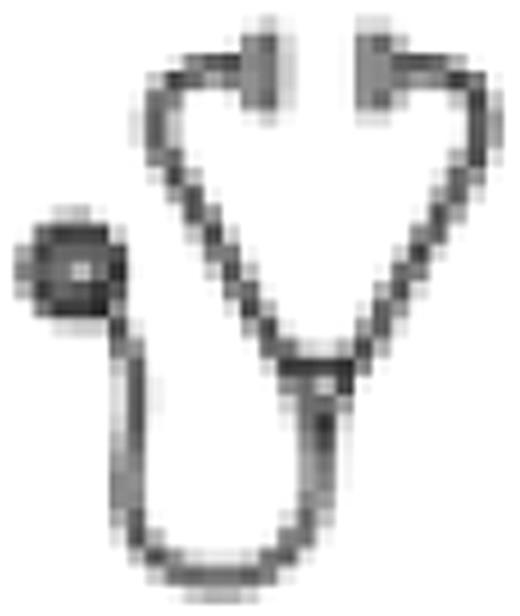Abstract
Poster Board I-607
High expression of the Brain And Acute Leukemia, Cytoplasmic (BAALC) gene is associated with primary chemotherapy resistance and inferior outcome in adult patients with cytogenetically normal (CN) acute myeloid leukemia (AML) and T-cell acute lymphoblastic leukemia (ALL). Due to the prognostic significance of BAALC in different leukemic lineages, we investigated its expression pattern and prognostic impact in adult B-precursor ALL, with a focus on patients lacking the molecular high-risk factors BCR-ABL and MLL-AF4.
BAALC expression was determined by quantitative real-time RT-PCR in pretreatment bone marrow samples of 368 adult patients with newly diagnosed B-precursor ALL treated on the 06/99 and 07/03 GMALL trials. Patients were grouped into tertiles (T1-T3) according to BAALC expression levels. The median follow-up was 44 months. Patients who received stem cell transplantation (SCT) in first remission (CR1) were censored at the time of SCT for survival analyses. In an additional set of 51 adult B-precursor ALL specimens, gene-expression profiling (GEP) was performed using HG-U133 Plus 2.0 (Affymetrix) to obtain insights into the biological function of BAALC and its potential role in drug resistance. Samples were divided into tertiles (t1-t3) by the median expression of the two probe sets representing BAALC (218899_s_at, 222780_s_at).
Higher BAALC expression (T3 vs T2 vs T1) was associated with a higher age (P<0.001), a higher white blood cell (WBC) count (P=0.008), CD34 positivity (P=0.001), presence of BCR-ABL (P<0.001), and of MLL-AF4 (P<0.001) in the overall cohort. In multivariate analysis including clinical and molecular variables, higher BAALC expression was the only predictive factor for primary therapy resistance in the overall cohort [OR 2.4 (95% CI 1.4-4.3); P=0.002]. In the BCR-ABL- and MLL-AF4-negative subgroup, higher BAALC expression independently predicted primary resistant disease [OR 4.2 (95% CI 1.4-12.3); P=0.01], as did the immunophenotype. BCR-ABL- and MLL-AF4-negative patients with higher BAALC expression had a significantly shorter overall survival [OS; 5-year OS: BAALC T3: 38% (95% CI 22-54), BAALC T2: 52% (95% CI 36-67), BAALC T1: 70% (95% CI 59-81); P=0.004]. Upon multivariate analysis, BAALC was of independent prognostic significance for OS in BCR-ABL- and MLL-AF4-negative patients [HR 1.4 (95% CI 1.0-2.0); P=0.03], as well as the factors WBC and age. Furthermore, we identified high BAALC expression as an independent predictive factor for inferior OS in the GMALL standard risk (SR) group [BCR-ABL- and MLL-AF4-negative patients with early therapy response and WBC '30/nl at initial diagnosis; HR 1.5 (95% CI 1.0-2.3); P=0.04]. The other variable in the final model predicting OS for SR patients was age. Interestingly, BCR-ABL- and MLL-AF4-negative patients allocated to allogeneic SCT in CR1 with high BAALC expression showed a particular survival benefit with a 5-year OS of 62%. In GEP analysis, high BAALC expression (t3 vs t1) was associated with the up-regulation of hematopoietic stem cell markers (CD34, CD99, FZD6) and genes implicated in chemoresistance (TSPAN7, LYN). Moreover, GEP revealed down-regulation of genes in the high BAALC group that had been related to a favourable outcome in adult ALL and AML (CDKN1C/p57Kip2, RGS2).
In addition to T-ALL and CN-AML, we have shown that BAALC predicts an unfavourable response to induction chemotherapy and inferior OS in adult B-precursor ALL patients. These clinical observations are further supported by the GEP signature associated with high BAALC expression. The lineage-independent association of BAALC with an immature, highly proliferative, and resistant leukemic phenotype underscores a possible involvement of BAALC in leukemogenesis and its putative role in chemoresistance.
Haferlach:MLL Munich Leukemia Laboratory: Equity Ownership.

This icon denotes an abstract that is clinically relevant.
Author notes
Asterisk with author names denotes non-ASH members.

This feature is available to Subscribers Only
Sign In or Create an Account Close Modal